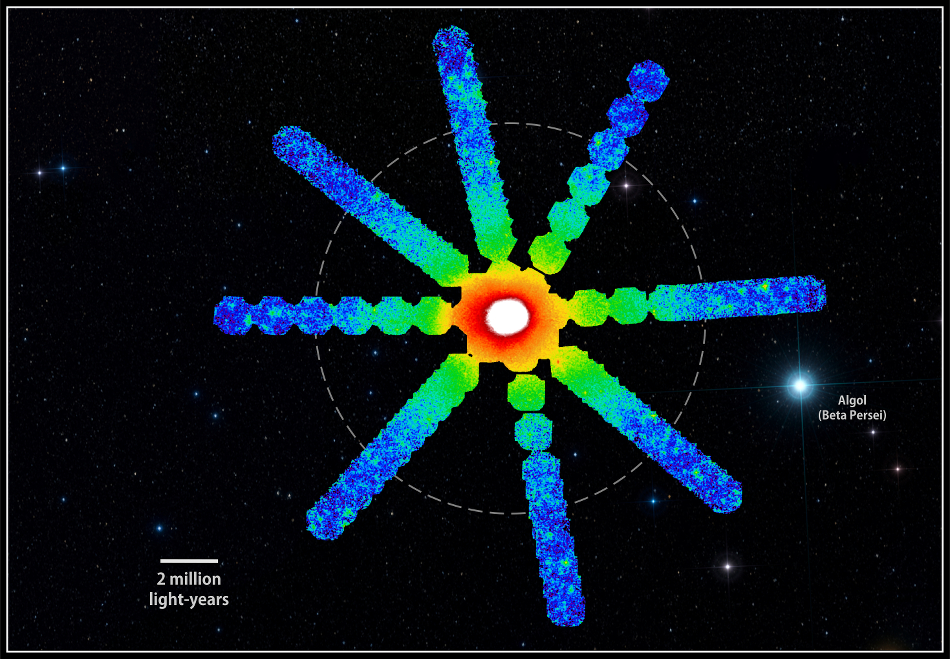
 Credit: NASA/ISAS/DSS/O. Urban et al., MNRAS
Credit: NASA/ISAS/DSS/O. Urban et al., MNRAS
Iron Chef
Iron is produced by exploding stars. As the Universe ages and more stars explode, the amount of iron in the Universe increases. Thus, the amount of iron is a measure of the history of stellar explosions. A new study of the super-hot, X-ray emitting gas in the Perseus cluster of galaxies by the Suzaku X-ray observatory has put important new constraints on the epoch of iron production. Cluster of galaxies like the Perseus cluster are huge structures consisting of hundreds or thousands of individual galaxies, and huge amounts of extremely hot, intergalactic gas all of which are held bound by the dark matter that permeates the cluster. A raster of Suzaku observations, shown above, observed the diffuse intracluster X-ray emitting gas at a variety of positions and distances from the cluster center. The sensitive detectors on Suzaku measure the amount of iron based on the observed X-ray emission from iron atoms that are so hot they have lost nearly all their 26 electrons. The Suzaku observations showed an astonishing thing: that over the entire cluster, which spans about 11 million light years, the amount of iron is roughly constant at every position studied. This means that the iron must have existed in its present abundance when the cluster formed aeons ago and suggests that, between 10 and 12 billion years ago, rapid star formation in early galaxies, and subsequent supernovae, produced the iron observed by Suzaku. This iron was then dispersed by galactic superwinds generated by the supernovae, and by enormous outflows from active supermassive black holes at the centers of these galaxies. About 40 billion supernovae (of Type Ia) are believed to have been needed to produce the amount of iron observed in the Perseus cluster.
Published: November 4, 2013
<
HEA Dictionary ● Archive
● Search HEAPOW
● Other Languages
● HEAPOW on Facebook
● Download all Images
● Education ● HEAD
>

Each week the HEASARC
brings you new, exciting and beautiful images from X-ray and Gamma ray
astronomy. Check back each week and be sure to check out the HEAPOW archive!
Page Author: Dr. Michael F. Corcoran
Last modified Monday, 26-Feb-2024 17:35:40 EST


